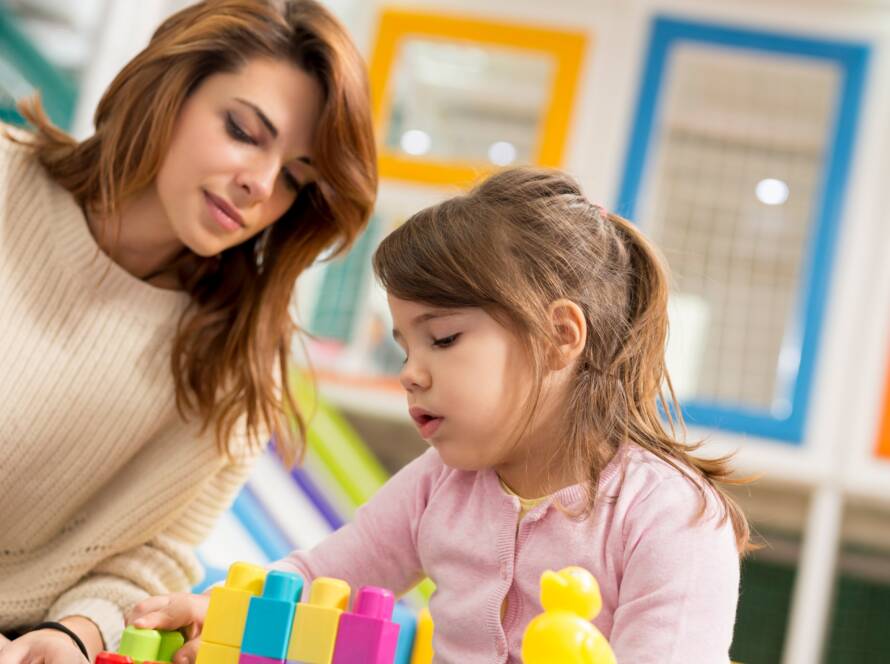Working in a children’s home is more than a job; it’s a responsibility that shapes young lives every day.
Families, local authorities, and the community expect staff to not only provide care but also ensure safety, stability, and personal growth for every child.
Learn more from our detailed guide on children’s homes recruitment and how to hire effectively.
If you’re here, you may be looking for ways to prepare staff, improve your home’s standards, or better understand what training is essential. I’ve seen firsthand how training changes outcomes.
Homes with structured programs create safer environments, keep staff longer, and meet compliance requirements without the stress of last-minute fixes.
As Ofsted highlights,
“High-quality staff training is a key driver of consistent, safe, and nurturing residential care.”
That one sentence captures why training isn’t optional, but essential for every child’s home in the UK.
Table of Contents
Key Takeaways
- Children’s home staff training ensures safety, confidence, and long-term retention of care staff.
- Effective training supports children’s homes recruitment by attracting motivated and skilled candidates.
- Core areas include safeguarding, first aid, behavior management, and compliance-focused induction.
- Ongoing development builds resilience, reduces turnover, and helps staff handle complex challenges with confidence.
- A well-trained team enhances reputation, improves inspection outcomes, and creates a stable environment for children.
Why Training Matters in Children’s Homes
Training is the foundation of safe and consistent childcare.
Without structured preparation, staff face challenges. They are not equipped to handle it, and children feel the impact.
Effective training for children’s home staff protects children, supports employees, and improves the reputation of the home.
The UK’s children’s residential sector is under pressure. According to Skills for Care, there are more than 35,000 vacancies across children’s social care roles, and turnover is rising.
Homes that invest in structured children’s home staff training not only retain their workers longer but also attract new applicants who value professional growth.
For children, the benefit is even clearer. Trained staff understand how to safeguard against risks, respond to emergencies, and manage behavior with confidence.
This reduces incidents, improves well-being, and helps children feel secure. Ofsted links strong training to better inspection results.
Homes with skilled staff give children safer and more supportive environments.
From a recruitment perspective, training signals commitment. Candidates are more likely to join and stay in homes that invest in their professional development in children’s residential care.
In fact, research by the National Center for Excellence in Residential Child Care (NCERCC) found that homes offering ongoing learning saw 25% higher staff retention than those that did not.
Simply put, good training creates a cycle of trust. Children feel cared for, staff feel supported, and homes become known as employers of choice, strengthening both recruitment and retention.
Core Areas of Children’s Home Staff Training
Training in children’s homes covers more than just policies.
It equips staff with the knowledge and confidence to handle real-life situations that directly affect children’s safety and development.
Below are the essential areas every care worker must master.
Safeguarding Training
Every staff member must complete safeguarding training to recognize, prevent, and respond to abuse or neglect.
This training helps workers understand the signs of risk and the correct reporting procedures.
- Protects children from harm
- Ensures compliance with UK child protection laws
- Builds staff confidence when dealing with sensitive issues
Example: A staff member noticing early signs of neglect during family visits can act quickly, preventing escalation.
First Aid for Child Care
Emergencies happen in residential care. First aid for child care ensures staff know how to respond to injuries, illnesses, or accidents.
Many homes also require first aid certification for care workers to meet regulatory standards.
- Covers CPR, choking, burns, and allergic reactions
- Gives children and families peace of mind
- Required for Ofsted compliance
Example: A staff member trained in first aid calmly handles an asthma attack, preventing panic and ensuring safety.
Behavior Management
Children in residential care often present complex needs. Effective behavior management helps staff reduce conflicts and support positive outcomes.
Training may include de-escalation techniques for children’s homes and behavior support training for residential childcare.
- Reduces challenging incidents
- Teaches calm, consistent responses
- Promotes emotional stability for children
Example: Instead of punishment, a trained worker uses de-escalation to guide a distressed child back to calm behavior.
Mandatory Compliance and Induction Training
New staff must complete induction training in children’s homes along with mandatory training for children’s home workers.
These sessions cover health and safety, safeguarding, and workplace policies. They lay the foundation for further development.
- Ensures staff meet legal and regulatory standards
- Provides knowledge of reporting systems and home policies
- Supports a smoother transition for new hires
Example: A new recruit who completes induction training understands reporting protocols immediately, avoiding compliance risks.
These areas don’t just tick boxes for inspections. They prepare staff for the unpredictable, everyday challenges of residential care.
Homes that invest in these programs see fewer incidents, stronger teamwork, and better outcomes for children.
How Training Supports Children’s Homes Recruitment
A strong children’s home staff training program does more than improve care; it attracts skilled candidates actively seeking professional development.
Prospective staff are drawn to homes that invest in ongoing training for residential care staff, specialist training for youth care workers, and clear pathways for growth.
Investing in training also strengthens your home’s reputation. Word spreads fast among professionals. Homes with strong development programs get more applications.
Homes with little support struggle to recruit. Structured training reduces turnover because staff feel valued, confident, and capable in their roles, which in turn meets regulatory and inspection standards.
Ofsted often praises homes where well-trained teams handle challenges effectively, noting better outcomes for children and smoother operations.
Case in point: At one Midlands residential home, the manager introduced a comprehensive training schedule covering safeguarding, first aid, behavior management, and communication skills training for care staff. Within six months, not only did staff retention improve by 30%, but the home also received twice as many qualified applications compared to the previous year. Staff reported feeling more confident handling crises, and inspections reflected these improvements, praising the home’s well-prepared team.
By linking training with recruitment and retention, homes create a positive cycle: skilled staff deliver better care, reputation improves, and more talented candidates are drawn to the environment.
Practical Tips for Implementing Effective Training Programs
Implementing children’s home staff training successfully requires planning, consistency, and follow-through.
Here’s a practical step-by-step approach that ensures staff are prepared and supported.
1. Assess Staff Skill Gaps
Begin by identifying areas where your team needs development. Conduct surveys, observe daily routines, and review incident reports. Understanding gaps ensures training is targeted and effective.
- Focus on areas like behavior management, safeguarding, and mental health awareness
- Tailor programs to different roles and experience levels
2. Partner with Accredited Training Providers
Choose reputable providers who specialize in training for children’s home staff. Accredited courses guarantee that staff learn up-to-date practices and meet UK standards.
- Ensure courses cover mandatory topics such as child protection training UK
- Look for programs offering certificates to enhance professional credibility
3. Blend Classroom Learning with On-the-Job Shadowing
Theory alone isn’t enough. Combine workshops with practical experience by allowing staff to shadow experienced colleagues.
- Apply de-escalation techniques for children’s homes in real situations
- Encourage reflection sessions to consolidate learning
- Promote teamwork and confidence in handling challenges
4. Track and Update Training Regularly
Training isn’t a one-time event. Schedule refreshers and update content to reflect changes in legislation or emerging best practices.
- Maintain records for compliance and inspections
- Integrate CPD training for residential childcare workers to support career growth
- Adjust programs based on staff feedback and performance outcomes
Following these steps ensures your training program is not just a requirement, but a tool for building competence, confidence, and a stronger team culture.
FAQ Section
What training is mandatory for children’s home staff?
Mandatory training includes safeguarding training, first aid for child care, behavior management, and induction training in children’s homes. Additional courses may include health and safety, conflict resolution, and mental health awareness training, depending on the home’s policies.
How long does induction training take?
Induction programs typically last two to four weeks, combining classroom learning, shadowing experienced staff, and practical exercises. This ensures new recruits are confident and compliant before taking on full responsibilities.
Is online training acceptable for safeguarding?
Yes, online training courses for care staff UK are widely accepted, especially for theoretical knowledge. However, practical components like behavior management or first aid often require in-person practice.
How often should refresher courses be taken?
Refresher training is recommended annually, or sooner if regulations change. Many homes also integrate ongoing training for residential care staff and CPD training for residential childcare workers to maintain skills and compliance.
What qualifications are required for children’s home staff?
Staff usually need recognized qualifications for children’s home staff and certificates in first aid, safeguarding, and role-specific training in children’s homes. Higher-level roles may require specialist qualifications in youth care or leadership.
Final Thoughts
Investing in children’s home staff training is more than meeting regulatory requirements; it directly impacts recruitment, retention, and the quality of care provided.
Well-trained staff are confident, capable, and motivated, making your home a sought-after place to work.
Training creates a culture of professionalism that attracts skilled candidates while reducing turnover, ensuring children receive consistent, high-quality support.
If you manage or recruit for a children’s home, now is the time to review your training programs.
Explore accredited providers, update induction and ongoing training schedules, and ensure staff have access to specialist training for youth care workers, mental health awareness sessions, and behavior support programs.
By investing in structured development, you strengthen your team, protect children, and elevate the reputation of your home.
To recruit skilled professionals or view live roles, visit our Children’s Homes Recruitment Agency home page.

